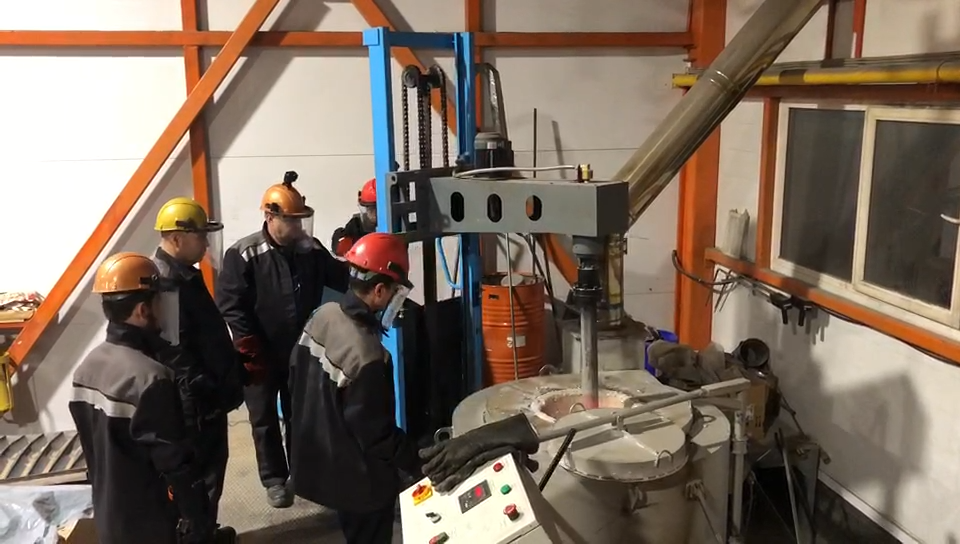

Oct . 22, 2024 06:09 Back to list
Understanding Eddy Current Technology in Aluminum Applications
Eddy current technology has gained significant attention in various industrial sectors, particularly in the processing and testing of conductive materials such as aluminum. This technology leverages the principles of electromagnetism to induce circulating currents, known as eddy currents, within conductive materials when exposed to a changing magnetic field. This article explores the fundamental principles of eddy currents, their applications in aluminum processing, and the advantages they bring to the industry.
The Fundamentals of Eddy Currents
Eddy currents are loops of electrical current that are induced within conductors by a changing magnetic field in the conductor. According to Faraday's law of electromagnetic induction, when a conductive material is subjected to a varying magnetic field, it experiences a change in magnetic flux. This change induces circulating currents within the material. The strength of these currents depends on factors such as the material's electrical conductivity, the velocity of the magnetic field change, and the geometry of the conductive object.
For aluminum, which is known for its excellent conductivity and low density, eddy currents can be particularly influential. The ability to generate and manipulate these currents presents a multitude of opportunities across diverse applications, from metal detection to non-destructive testing (NDT) methods.
Applications in Aluminum Processing
1. Non-Destructive Testing (NDT) Eddy current testing is a widely used NDT method for evaluating the integrity of aluminum components. This technique is especially valuable in industries such as aerospace and automotive, where even the smallest defects can compromise safety and performance. By measuring the changes in eddy current flow, inspectors can detect surface cracks, density variations, and other structural anomalies without damaging the component.
2. Metal Sorting and Recycling The recycling of aluminum has become a critical aspect of sustainable manufacturing practices. Eddy current technology is employed in separation systems to differentiate aluminum from other metals. By using a magnetic field to induce eddy currents, aluminum can be efficiently separated due to its unique conductive properties, facilitating the recycling process and enhancing material recovery.

3. Heating Applications Induction heating, which relies on eddy currents, is used in forging, welding, and heat treatment processes for aluminum. The technology provides precise and rapid heating of aluminum alloys without direct contact, reducing energy consumption and improving production efficiency. This is particularly beneficial in applications requiring specific temperature control for metallurgical processes.
4. Thickness Measurement Eddy current technology is also utilized for non-contact thickness measurement of aluminum coatings. This application is crucial in industries where the coating thickness is integral to product performance, such as in automotive or aerospace components. Accurate measurements aid in quality control and ensure compliance with industry standards.
Advantages of Eddy Current Technology
The adoption of eddy current technology in aluminum processing offers numerous benefits
- Non-Destructive Testing As an NDT method, it allows for thorough inspections without impairing the material, thereby extending the life of aluminum components. - Speed and Efficiency Eddy current systems provide rapid assessments and sorting capabilities, which are essential in high-throughput manufacturing environments. - Precision This technology offers high accuracy in measurement and defect detection, which is vital in applications requiring stringent quality control. - Environmental Benefits By facilitating the recycling of aluminum, eddy current technology contributes to sustainable practices, reducing waste and the need for virgin materials.
Conclusion
Eddy current technology represents a pivotal advancement in the processing and testing of aluminum. Its diverse applications range from non-destructive testing to efficient recycling, all while promoting sustainability and enhancing product quality. As industries continue to innovate and adopt advanced technologies, the role of eddy currents in aluminum applications is likely to expand, promising even greater efficiencies and capabilities in the future. Whether in ensuring safety in aerospace components or optimizing recycling processes, eddy current technology remains a cornerstone of modern manufacturing practices, highlighting the remarkable dynamism of electromagnetism in our industrial landscape.
Latest news
Troubleshooting Common Eddy Separator Problems
NewsJul.04,2025
The Role of Metal Recycling Plants in Circular Economy
NewsJul.04,2025
The Impact of Recycling Line Pickers on Waste Management Costs
NewsJul.04,2025
Safety Features Every Metal Shredder Should Have
NewsJul.04,2025
How Industrial Shredders Improve Waste Management Systems
NewsJul.04,2025
How Cable Granulators Contribute to Sustainable Recycling
NewsJul.04,2025